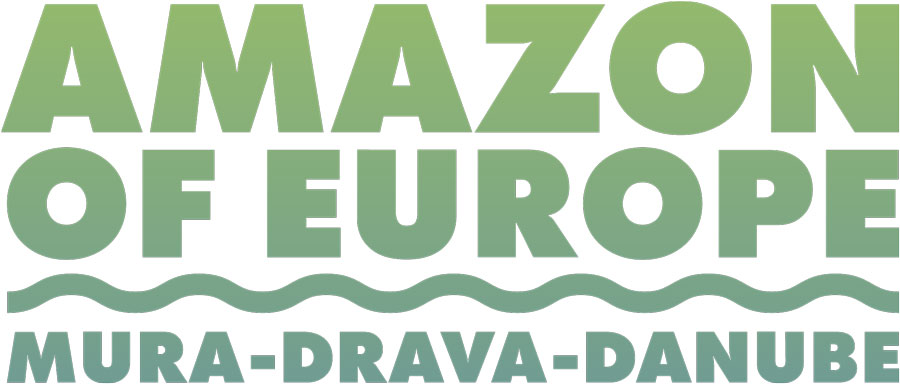The Biosphere Reserve
General information
Stretching across Austria, Slovenia, Croatia, Hungary and Serbia, the lower reaches of the Drava and Mura rivers, together with connected sections of the Danube, form one of the most ecologically important river systems in Europe: the so-called ‘Amazon of Europe’.
The rivers form a 700-kilometre-long “green belt” linking almost 1,000,000 hectares of highly valuable natural and cultural landscapes in all five countries, and have therefore become a symbol of unity through the creation of the UNESCO Five-country Biosphere Reserve Mura-Drava-Danube (TBR MDD).
Despite many human-induced changes in the past, this stunning river landscape is home to an amazing biodiversity and is a hotspot for rare natural habitats such as large floodplain forests, river islands, gravel and sand banks, side arms and oxbows. These habitats are home to the highest density of breeding pairs of white-tailed eagles in continental Europe and other threatened species such as the little tern, black stork, beaver and otter. Each year, more than 250,000 migratory waterbirds use the rivers to rest and feed.
As well as being rich in biodiversity, the rivers and floodplains are vital to local communities. The natural rivers and extensive floodplains reduce the risk of flooding and ensure favourable groundwater conditions and water self-purification, which is essential for drinking water, forests and agriculture. People also enjoy recreational activities along the rivers, such as walking, swimming and fishing.
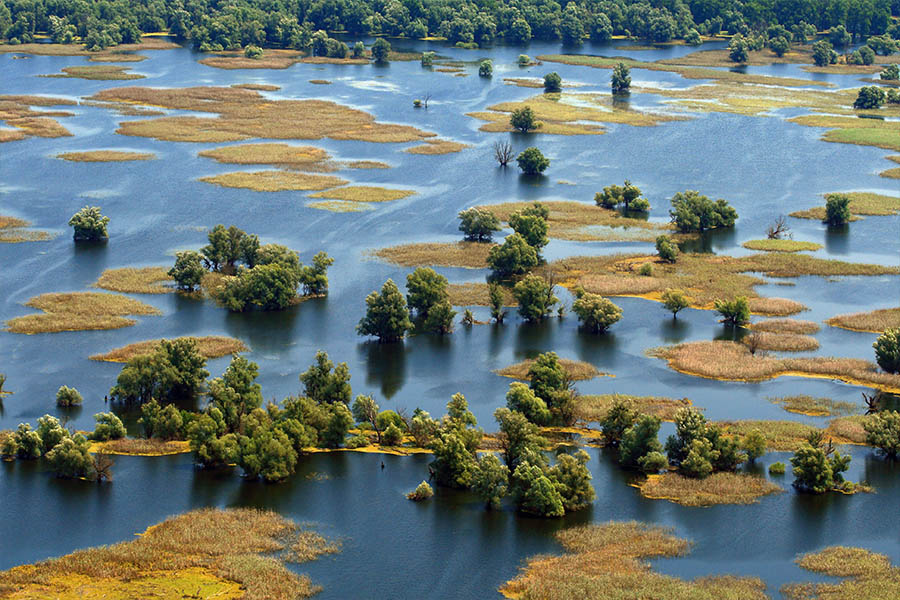
Protection
The TBR MDD is a pioneering initiative in large-scale transboundary conservation, which demonstrates the power of international cooperation under UNESCO patronage to conserve biodiversity. As the world’s first five-country biosphere reserve, it uses innovative strategies to protect the rich ecosystems and harmonise the management of the 12 major protected areas along these iconic European rivers, balancing conservation with sustainable regional development.
Threats
Despite its protected status, the TBR MDD faces numerous challenges that threaten its ecological integrity. The rivers are threatened by various human activities and outdated management practices. They suffer from past river regulation, sediment exploitation, hydropower dams upstream in the area, and intensification of forestry and agriculture. Understanding these threats is crucial to developing effective conservation strategies and ensuring the long-term survival of this unique river ecosystem.
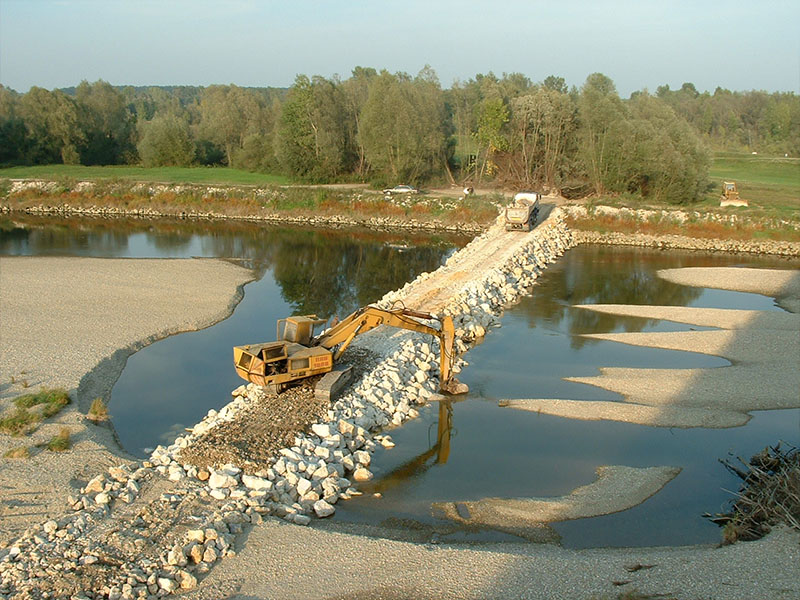
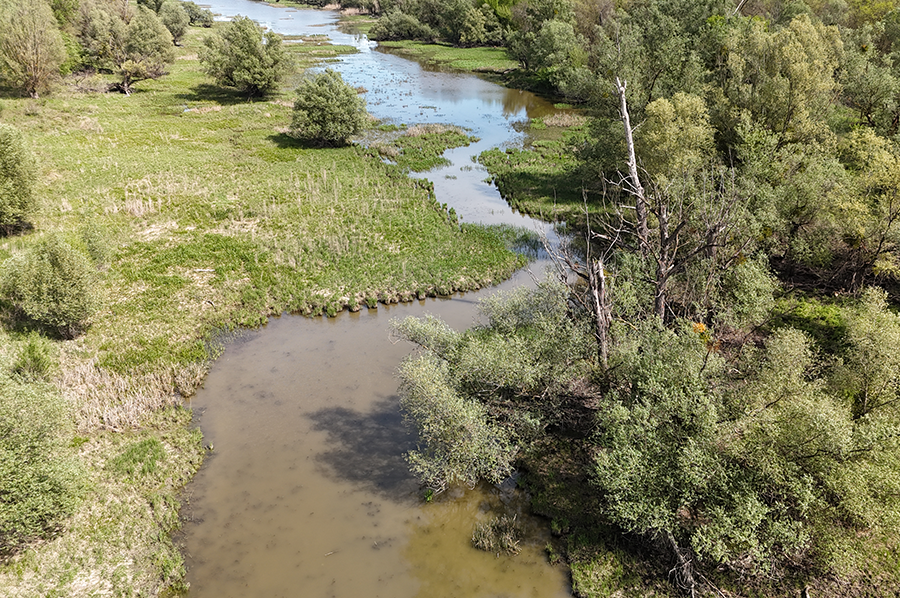
RESTORATION
Restoration is a key focus of the TBR MDD, which aims to establish and improve the natural dynamics of degraded river reaches and their floodplains. These efforts go beyond mere protection and actively work to enhance biodiversity, flood protection, drinking water quality and recreational opportunities for local people. Through integrated restoration projects, the reserve aims to create a balance between nature and human activities.
History
To protect the Mura-Drava-Danube region, WWF and conservation partners across the five countries have been working for almost 30 years to establish the TBR MDD. In March 2011, in Gödöllő, Hungary, within Hungarian EU Presidency in an act of great environmental leadership and transboundary cooperation, the environment and nature conservation ministers of Austria, Slovenia, Croatia, Hungary and Serbia signed a joint declaration on the establishment of the biosphere reserve. Following the designation of the individual biosphere reserves, the long-awaited goal was finally achieved when the world’s first five-country biosphere reserve was designated by UNESCO on 15ᵗʰ September 2021.
TIMELINE
1993
The idea to establish a transboundary biosphere reserve is born.
2009
Croatia and Hungary sign a bilateral ministerial declaration on the establishment of a transboundary biosphere reserve in their territories along the Mura, Drava and Danube rivers.
2011
2012
2017
2018
UNESCO designates the Slovenian Biosphere Reserve Mura.
2019
2019
September 2021
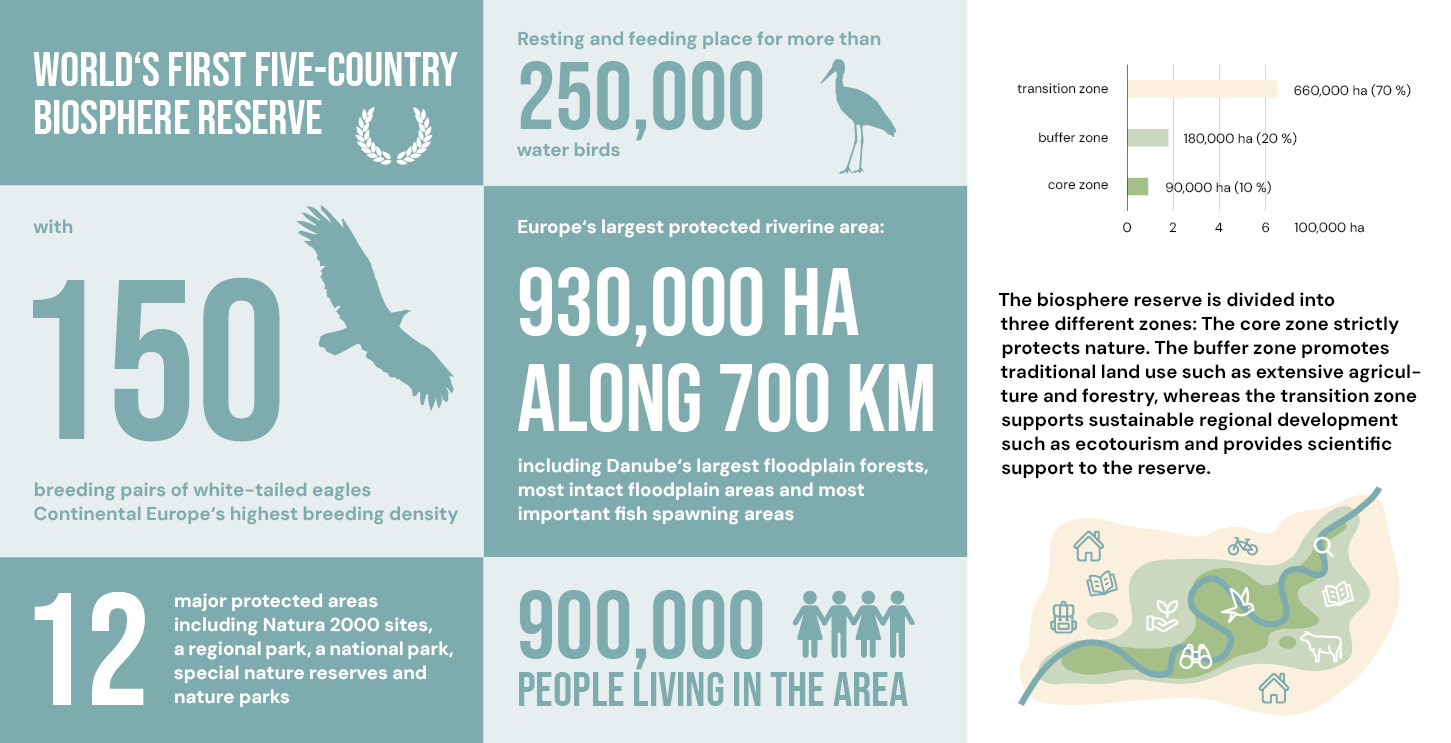
It’s time to rediscover our connection with nature! As well as preserving living river ecosystems, we aim to promote sustainable development within the TBR MDD.
Imagine vibrant rivers with dreamy islands, natural gravel and sand banks, mysterious side channels and lush floodplains with ancient trees. Imagine thriving wildlife: black storks hunting along shallow riverbanks, thousands of sand martins catching mosquitoes to feed their young on natural riverbanks and sterlets spawning on gravel banks. People living sustainably within this healthy ecosystem, pasturing the meadows along the rivers and supporting a diverse local economy and embracing its rich cultural heritage. This is our vision: Living rivers for nature and people!
